Issue 8: Closet Confessions: How Tofe & Yasmin (Re)define Personal Style
Join Tofe, Yasmin, and me for a conversation on fashion, identity, and the stories our clothes carry, from the power of rewearing to the influence of culture on personal style!
Welcome new subscribers! I’m so glad you’re here. Whether you found your way through a recommendation, my social media, or sheer curiosity, you’re now part of the Probably Eating a Croissant community, where we explore fashion, culture, sustainability, international development and everything in between.
Also, happy Women’s History Month, a time to celebrate the contributions of women past and present. And what better way to kick things off than by talking about personal style, self-expression, and how two incredible women, Tofe and Yasmin, approach fashion with intention and sustainability?
Closet Confessions
At a graduation party in the middle of summer in London last year, my friends Tofe, Kanmino, and I were deep in conversation about fashion, what we were wearing that night, what we’d wear for another friend’s upcoming celebration, and, of course, the inevitable question: should we buy something new? That’s when Tofe casually dropped some wisdom that stuck with me: “We actually have enough clothes. We should just shop our closets.”
That moment shifted my perspective. I took her advice to heart for the rest of the summer, resisting the urge to buy something new for every event and instead rediscovering what was already in my wardrobe. When I saw her at the next graduation party, I told her how much her words had inspired me, and our friend Yasmin joined the conversation that night.
The concept of “shopping your closet” isn’t new, but in Tofe’s words, “It’s about making something out of what you have rather than buying something new every time.” It challenges the idea that we need a fresh outfit for every occasion and reminds us that clothes are meant to be worn and re-worn—not just for one-time use. In Issue 3: Closet Confessions:Why I’m Breaking Up with Fast Fashion, I highlighted how clothing overconsumption, particularly in North America and Europe, is growing at an alarming rate, contributing to environmental damage, from textile waste flooding places like Jamestown Beach in Accra, Ghana, to the exploitation of garment workers. Rethinking how we consume fashion is crucial, not just for sustainability but for a more mindful and intentional approach to personal style.
To kick off Women’s History Month, I sat down for what was meant to be a quick chat with two of the coolest, most stylish women I know: Tofe, a model, art curator, and media executive, and Yasmin, a Liberal Arts graduate specializing in Cultural Studies and Systemic Sustainable Development. Yasmin is also a multidisciplinary creative exploring fashion, art, culture, and identity through styling, creative direction, and experimental projects. What was supposed to be a 40-minute conversation turned into a three-hour deep dive into personal style, shopping habits, sustainability, the ethics of fashion, globalization, and how culture shapes our style over time.
We challenged each other’s perspectives, asked difficult questions, and reflected on whether globalization is enhancing or stifling individuality in fashion. It was eye-opening, thought-provoking, and incredibly fun. I can’t wait for you to read all about it.
Let’s get into it.
Personal Style & Identity
Style is more than just the clothes we wear, it’s an extension of who we are, shaped by our experiences, cultures, and the environments we move through. As Tofe, Yasmin, and I talked about our own fashion journeys, it became clear that personal style isn’t static. It evolves, influenced by the cities we’ve lived in, the people around us, and the ways we choose to express ourselves.
Tofe describes her style evolution as a reflection of her everyday experiences. “Your friends, social media, where you shop, and where you live all play a role,” she says. Moving to Manchester (for her undergrad, but now back living in London), she found the city’s energy central to her fashion growth. “It’s interesting because there’s no single definition of what Manchester style is,” she explains. There’s a mix of Western influences, but she doesn’t want her aesthetic to feel rigid, she embraces fluidity and is making a conscious effort to support more Nigerian brands. Traveling has also expanded her perspective, exposing her to new designers and fresh ways of dressing.
For Yasmin, personal style is closely tied to self-confidence and self-expression. Reflecting on her late teens, she recalls being drawn to streetwear and bold statement earrings, using fashion as a way to express herself. Her one-year move to Montreal became a turning point. Surrounded by a wave of creativity, she began curating a wardrobe that truly reflected her identity, rather than what others expected her to wear. “What really counts as culture influencing your style?” she asks. “When you’re privileged to travel and engage with different communities, your fashion sense naturally shifts. The diversity in experiences and styles leaves an imprint, especially if you’re paying attention.” One of her favorite ways to bring travel into her fashion is through accessories; she collects statement earrings from each new place she visits, weaving those memories into her everyday looks. She also sees fashion subcultures, like Japanese workwear and alternative fashion, as spaces where people can fully embrace their individuality. “Growing up in different cities means there’s always a mix in our style, a bit of Lagos, a bit of London,” she adds.
Listening to Tofe and Yasmin reflect on their style journeys made me think about my own. I’ve always considered my style eclectic, but this conversation made me even more aware of how much my surroundings have shaped the way I dress. Whether it’s the cities we’ve lived in, the cultures we engage with, or the identities we carry, all of these influences subtly (or sometimes overtly) shape our personal style. And that’s what makes fashion so exciting, it’s always evolving, just like we are.
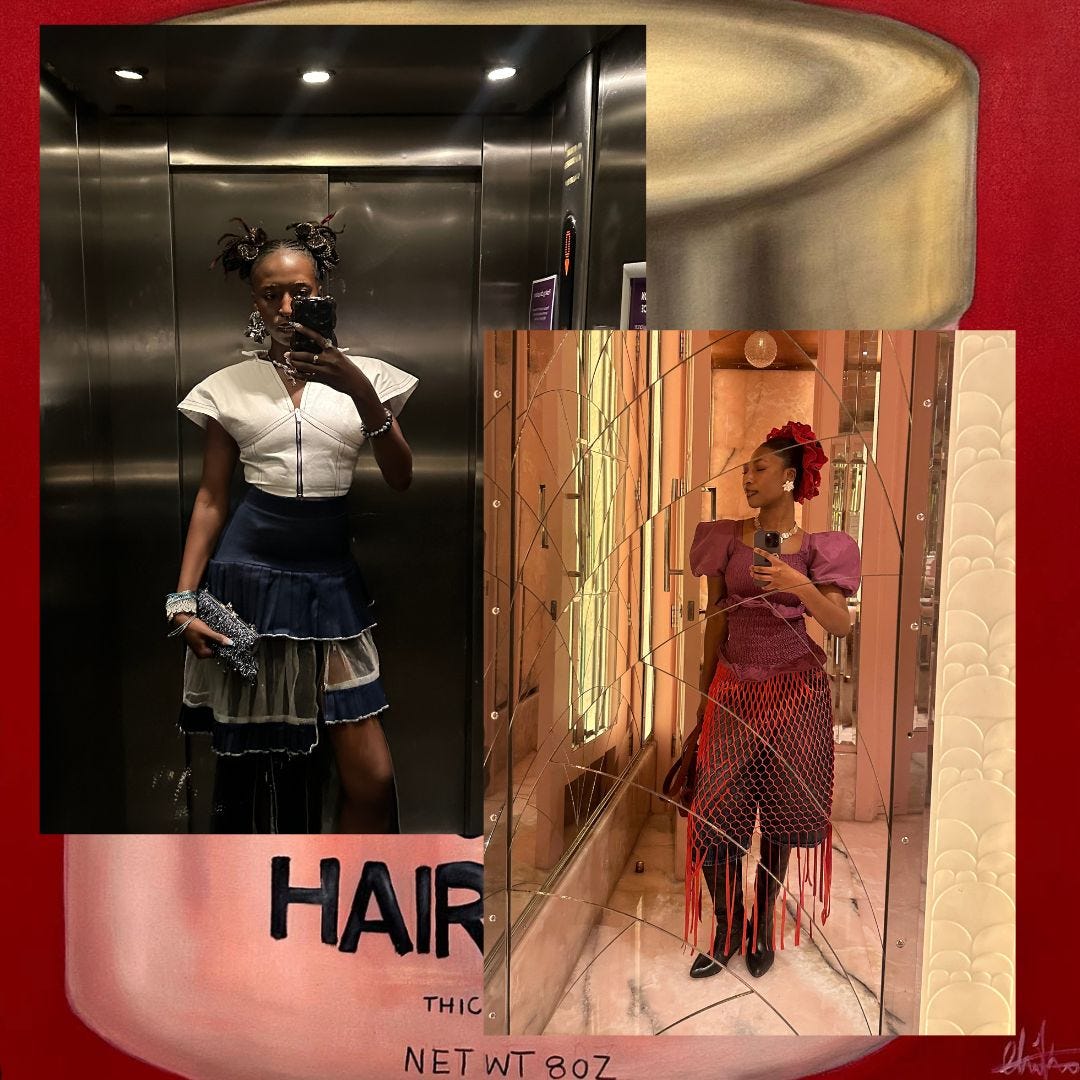
Defining Personal Style Through Sustainability
Sustainability in fashion isn’t just about buying less, it’s about making intentional choices. One of the biggest shifts in my own approach to style was embracing the idea of “shopping my closet,” a habit I picked up from Tofe. It’s a mindset that encourages creativity, pushing us to reimagine what we already own rather than constantly seeking something new.
When I asked Tofe and Yasmin what “shopping your closet” means to them, Yasmin put it simply: “It means realizing you don’t need to buy a new outfit for every occasion. It’s about recreating looks with pieces you already have.” For her, the process of restyling old pieces can be just as satisfying as shopping, it still gives her that dopamine rush, but without the cycle of overconsumption. “It’s a way to break that habit,” she adds. “It’s about reproduction, finding new ways to wear what’s already there.”
Tofe brings in a different perspective, explaining that this mindset was ingrained in her early on. Growing up in Nigeria, there was an unspoken tradition, new school year = new wardrobe. But because shopping locally at the time wasn’t common, getting new clothes meant waiting until the next family trip abroad. “If you weren’t traveling anytime soon, you had to make do with what you had,” she explains. “You had to get creative.” As a result, she learned to be resourceful, styling pieces in different ways to make them feel fresh. Even when her parents brought back clothes that didn’t quite align with her taste, she found ways to tweak and layer them to reflect her personal style. Over time, this approach became second nature. “It’s about looking at something and seeing the art in it,” she says. “Not just buying something new every time.” Like me, she also struggled with overconsumption in the past, but now she’s more mindful of what she brings into her wardrobe.
As I mentioned in my first Closet Confessions article, my own shift away from fast fashion led me to thrifting, a discovery that completely changed the way I see clothes. It opened me up to new styles, allowed me to refine my aesthetic, and gave me a deeper appreciation for the history behind each piece. When I asked Tofe and Yasmin how second-hand shopping shaped their personal style, they both had compelling stories to share.
For Tofe, thrifting was something she stumbled into out of necessity. During her A-levels, she lived in a small town called Sandwith in the UK, where shopping options were limited. “All we had were charity shops,” she says. “I didn’t even know they existed before, but once I discovered them, I fell in love.” She was drawn to the idea of giving clothes a second life and now estimates that 80% of her wardrobe is second-hand.
Yasmin, on the other hand, had a different journey. She initially resisted thrifting, weighed down by the stigma surrounding second-hand shopping. But when she moved to Montreal, where ethical consumption was more normalized, she slowly embraced it. “Once I got over that mental block, it became something exciting,” she says. “There’s a sense of adventure in it, you never know what you’re going to find.” Over time, thrifting not only expanded her style but also shifted her mindset. Now, when she travels, she makes it a point to check out local thrift stores, seeing it as a way to bring pieces with a story into her wardrobe. “It’s a much more intentional process than shopping online,” she reflects. “It’s made me more open-minded about what I buy and where it comes from.”
What struck me most about our conversation was how much attitudes toward second-hand shopping have evolved. Growing up, thrifting was often looked down upon, seen as something people did out of financial necessity. But today, it’s not only accepted, it’s celebrated. The narrative has shifted, and more people are recognizing the value in sustainable consumption.
This naturally led us to another important question: how do we decide what to buy and where to shop? Since all three of us share a similar approach to mindful shopping, I was curious about their thought process. I explained that when I buy something first-hand, I always check the fabric composition and brand ethics, while for second-hand purchases, I’m more flexible, focusing on the fabric composition of pieces like coats and sweaters rather than being as strict with tops and other basics.
Yasmin resonated with this approach, emphasizing that she avoids fast fashion brands as much as possible. While some of the brands she supports still use synthetic fibers, she prioritizes smaller labels that don’t exploit their workers. For Tofe, shopping has always been more about the experience than the act itself. “I’ve never really enjoyed in-person shopping unless it’s thrifting,” she admits. But through our conversation, she realized she wants to be more mindful about what she buys, paying closer attention to where a piece is made, the materials used, and the impact behind each purchase.
Confidence & Self-Expression
As our conversation shifted toward confidence and personal style, I asked Yasmin and Tofe if they saw a connection between the way they dressed and their confidence. Yasmin pointed out that beyond self-confidence, there’s an element of self-validation in putting together an outfit. She believes that personal style should reflect one’s own gaze rather than external influences. Tofe, on the other hand, describes herself as a naturally confident person, perhaps even more so when she was younger. She expresses that dressing boldly, especially in an eclectic way, requires the confidence to back it up.
From this, I gathered that confidence in personal style is something that develops through experimentation. Trying new things, taking risks, and evolving one’s wardrobe all contribute to a deeper sense of self-assurance. This led us into a discussion on individuality in an era dominated by micro-trends and fast-moving fashion cycles.
I mentioned something I once heard, that trends are like buses; you hop on and hop off as needed. But in today’s world, it feels like no one ever hops off. With the relentless churn of micro-trends, there’s a growing pressure to stay in constant rotation. While I don’t think engaging with trends is inherently bad (I find myself drawn to some), I tend to wait before committing. Curious about their perspectives, I asked Yasmin and Tofe whether they feel pressured to follow trends or if they actively resist them.
Yasmin acknowledged the interplay between fashion and trends, noting that what is fashionable often becomes trendy, and vice versa. She admitted to loving the aesthetic of a mesh flat, (a piece we all admire but have yet to purchase). However, she emphasized the importance of discernment, avoiding trends that force her into a grouped aesthetic that doesn’t feel true to her. For her, intentionality is key in distinguishing between personal style and fleeting trends.
Tofe, on the other hand, is largely uninterested in trends. She resists engaging with them altogether, both because of their unsustainable nature and because she prefers to build a wardrobe that isn’t dictated by external cycles. She encourages stepping away from the idea of constructing an entire closet around what’s currently popular.
This naturally led us to a broader discussion on the state of fashion today, especially with the acceleration of micro-trends. Yasmin, who follows fashion writing on Substack, believes that micro-trends will eventually lose their grip. She predicts a return to macro trends, those overarching movements that dictate style on a larger scale, likely influenced once again by fashion houses rather than social media. She also thinks people are growing weary of short-form content and the pressures of online consumption, which could lead to a renewed focus on cultivating personal style.
Tofe, offering a different perspective, brought up conversations she’s had about the future of fashion in the metaverse. She sees a shift toward digital fashion, as well as a growing interest in Nigerian and African fashion, a space she finds increasingly influential and exciting.
As for me, I recognize the nuances in how we all engage with style. Whether it’s resisting trends entirely, selectively embracing them, or exploring emerging fashion movements, the landscape is constantly evolving. I’m looking forward to seeing what shape it takes next.
The Ethics of Fashion & Globalization
As our conversation shifted to the ethics of fashion and globalization, I wanted to connect it back to the idea that everything we engage with today is, in some way, a cultural exchange. I asked Yasmin and Tofe whether they thought globalization had diluted or enhanced individuality in fashion.
At first, Tofe leaned toward the idea that globalization dilutes individuality, but then she reconsidered, acknowledging the complexity of the issue. Yasmin, on the other hand, argued that globalization both dilutes and enhances individuality. She pointed out that fashion is inherently referential, everything builds on what came before. Even something as simple as creating a mood board relies on sourcing inspiration from places like Pinterest or fashion magazines.
On one hand, globalization fuels trends and micro-trends, changing the way we consume and engage with fashion. The speed of these cycles can homogenize style, making it harder for individuality to shine through. But on the other hand, Yasmin noted that globalization also expands the possibilities of self-expression. The access it provides allows people to develop incredibly niche interests, curating styles that may not have been possible otherwise.
For me, I see the nuances in this conversation, there is no absolute right or wrong answer. Fashion has always been a product of cultural exchange. I brought up designer Daniel Roseberry as an example, his creative vision is deeply influenced by the things he has consumed and experienced over time. This, to me, is the essence of globalization in fashion: an ever-evolving dialogue between cultures, past and present.
Of course, we couldn’t have this conversation without circling back to Nigeria and the undeniable impact of Nigerian fashion houses. Unless you’ve been living under a rock, you’ve likely seen how they are making waves on a global scale in ways that haven’t been done before. More than ever, I find myself drawn toward shopping Nigerian brands, and so are Yasmin and Tofe. I asked them what has fueled their passion for supporting Nigerian fashion.
Yasmin’s response was poetic and thoughtful. She admires how Nigerian brands are incredibly innovative, each with its own distinct identity and voice. To her, their designs are not just clothing but pieces of art. She reminisced about attending Lagos Fashion Week with her mom, witnessing firsthand the artistry of these designers, which sparked an even deeper appreciation for Nigerian fashion. She loves the idea of wearing clothing that feels timeless, pieces that hold meaning beyond fleeting trends. Shopping locally, she believes, allows her to invest in artistry while also supporting the economy. “It’s amazing to shop the naira and grow the naira,” she added.
Tofe shared a similarly passionate yet uniquely patriotic perspective. She emphasised that Nigerian brands embody an authenticity that feels raw and true to themselves. For her, part of the appeal is tied to the eccentricity of being Nigerian, a quality she deeply loves. She pointed out that the brands in the West that achieve a similar level of uniqueness are often highly inaccessible. Nigerian designers, however, offer that same level of artistry while remaining deeply rooted in cultural heritage.
It genuinely warms my heart to see more people shopping Nigeria because these brands are so deserving of the recognition they’re getting. Beyond the creative impact, the economic implications are significant. The traction Nigerian fashion is gaining on a global scale isn’t just about aesthetics, it’s about growth, sustainability, and strengthening the naira. And that, in itself, is something worth celebrating.
Final Thoughts
To conclude our insightful conversation, I asked Yasmin and Tofe one final question: What do you hope the future of fashion will look like?
Tofe shared that she wants sustainability to be the driving force for both brands and consumers. She believes that instead of seeking Western validation for what is considered fashionable or acceptable, we should turn inward, celebrating and supporting our own people, designers, and industries. For her, the future of fashion should be one that prioritizes ethical production, cultural authenticity, and self-determination.
Yasmin reflected on the increasing inaccessibility of fashion in Nigeria due to the economic challenges many face. She hopes to see sustainability and economic accessibility merge so that fashion remains not just an art form but an industry that is viable and inclusive. She envisions a future where Nigerian fashion brands continue to thrive, forging bilateral collaborations with other African designers. To her, the goal is to create nexuses within the continent, decentering Western influence and centering African creativity. She dreams of a fashion industry that regenerates itself from within, one where African designers dictate the narrative of their own craftsmanship and innovation.
Their responses highlight an important shift already underway: a movement toward self-sufficiency, sustainability, and a reclamation of identity in fashion. The future of fashion, particularly within the African continent, is not just about aesthetics, it is about economic empowerment, cultural preservation, and ethical responsibility. If the current trajectory continues, we are on the brink of a renaissance, one where African fashion is not only celebrated globally but is also deeply rooted in its own values and vision for the future.
Thus, fashion is a reflection of who we are, our experiences, our values, and the stories we choose to tell through what we wear. Conversations like this remind us that personal style isn’t about chasing trends or constantly seeking something new; it’s about creativity, sustainability, and embracing the pieces that already exist in our wardrobes. Tofe and Yasmin’s insights challenge us to rethink our relationship with fashion, making space for intention and authenticity in how we dress. As we celebrate Women’s History Month, let’s carry these lessons forward, honouring the past, shaping the future, and redefining style on our terms.
Thanks so much for reading this week’s issue, I hope you enjoyed it as much as I enjoyed making it! and I hope to see you again next week!


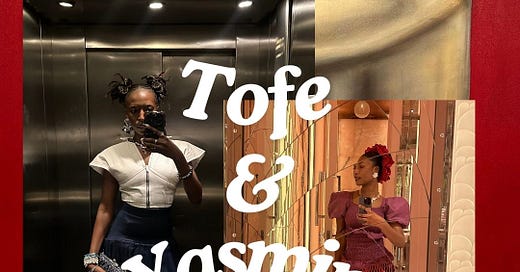



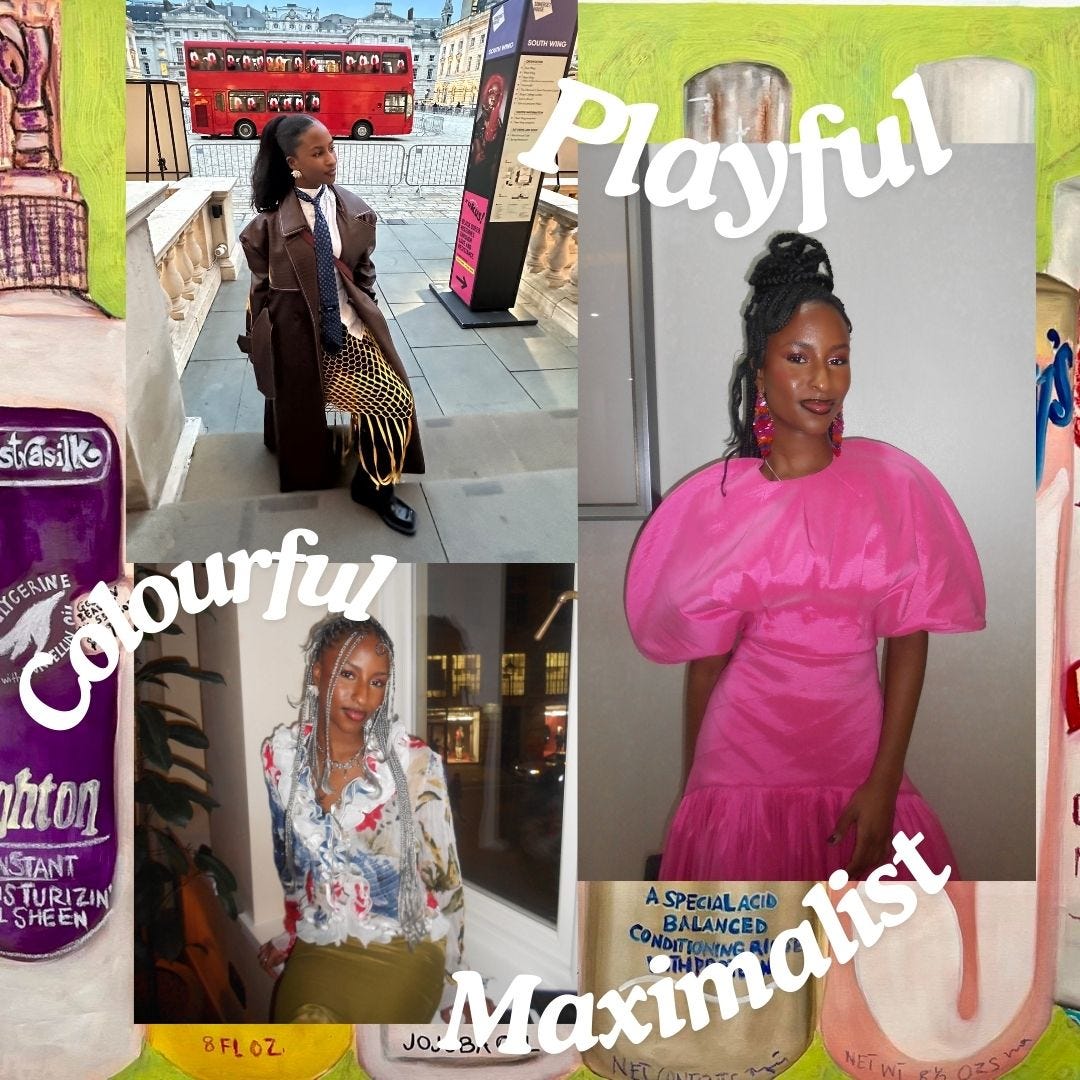
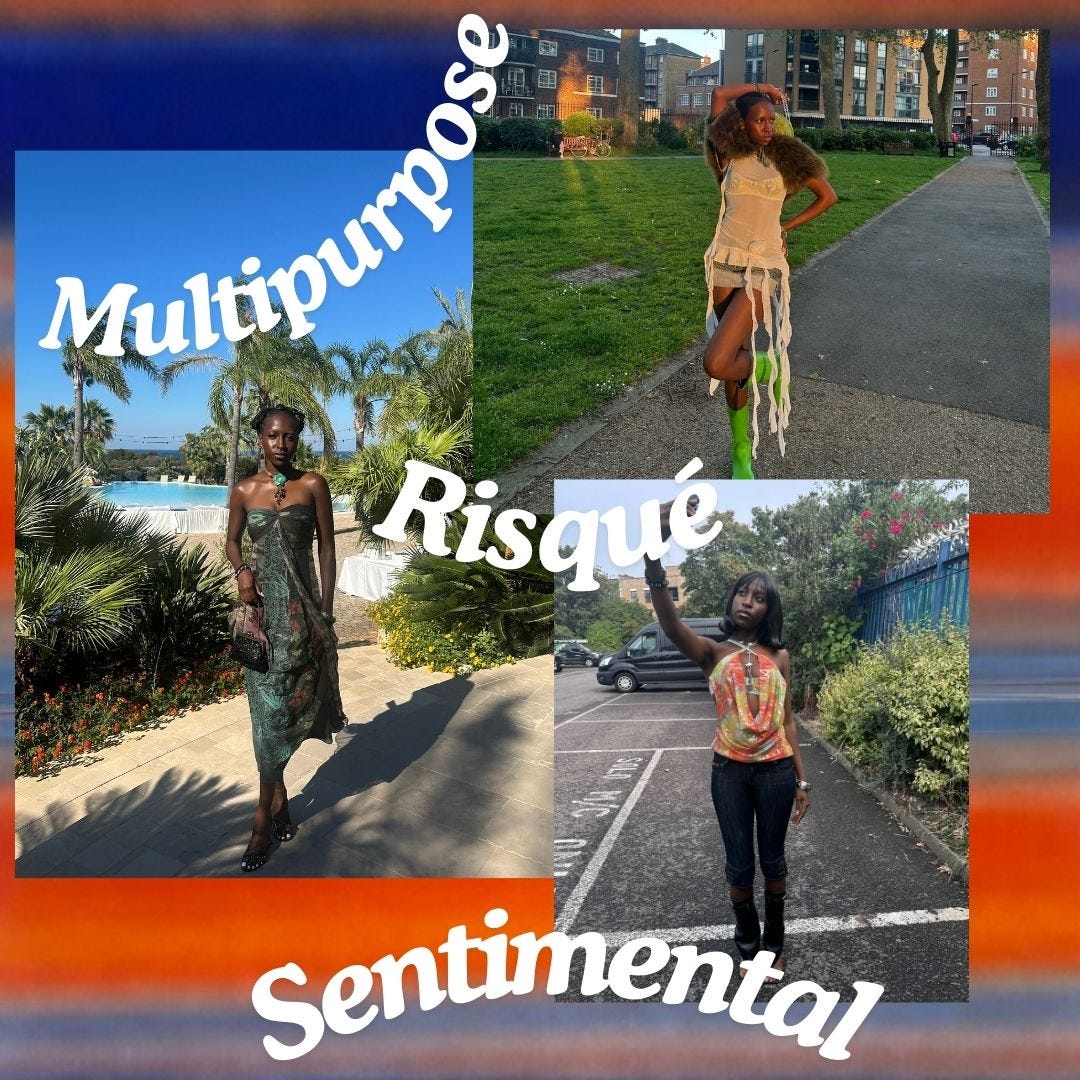
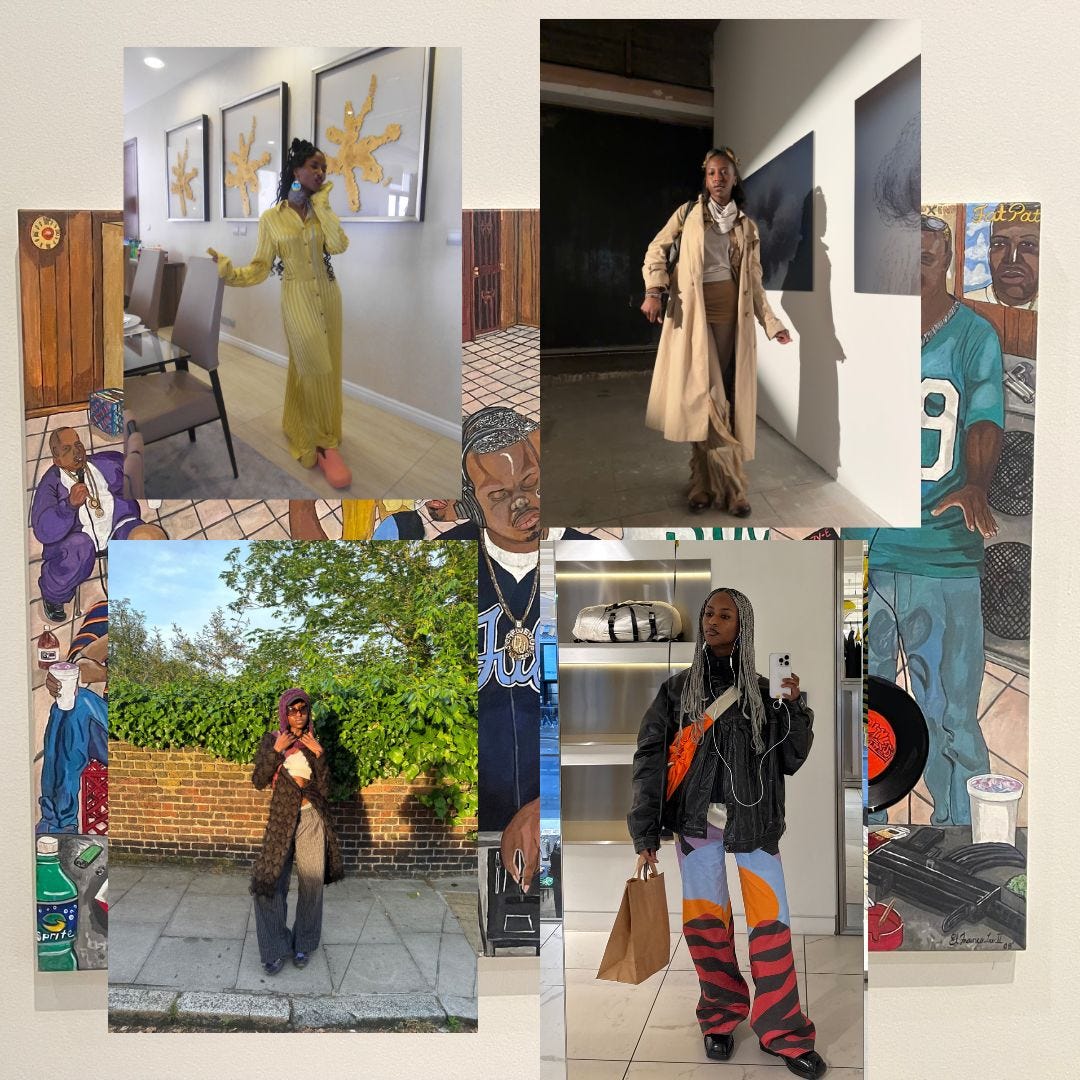
I love this, Ella! Permission to stretch it a little bit? This makes for a good pit stop too, to reflect beyond fashion when we think 'shop my closet '. By the way, that phrase hits home and got me thinking about cars, furniture etc. To restore and reuse or to keep using the ones we have. Back to the article, I love the bit about personal style...keeps one in check and helps to contain 'long throat'. Thumbs up!
I really enjoyed reading this. I loved how you looked at fashion and globalization and how they interact.